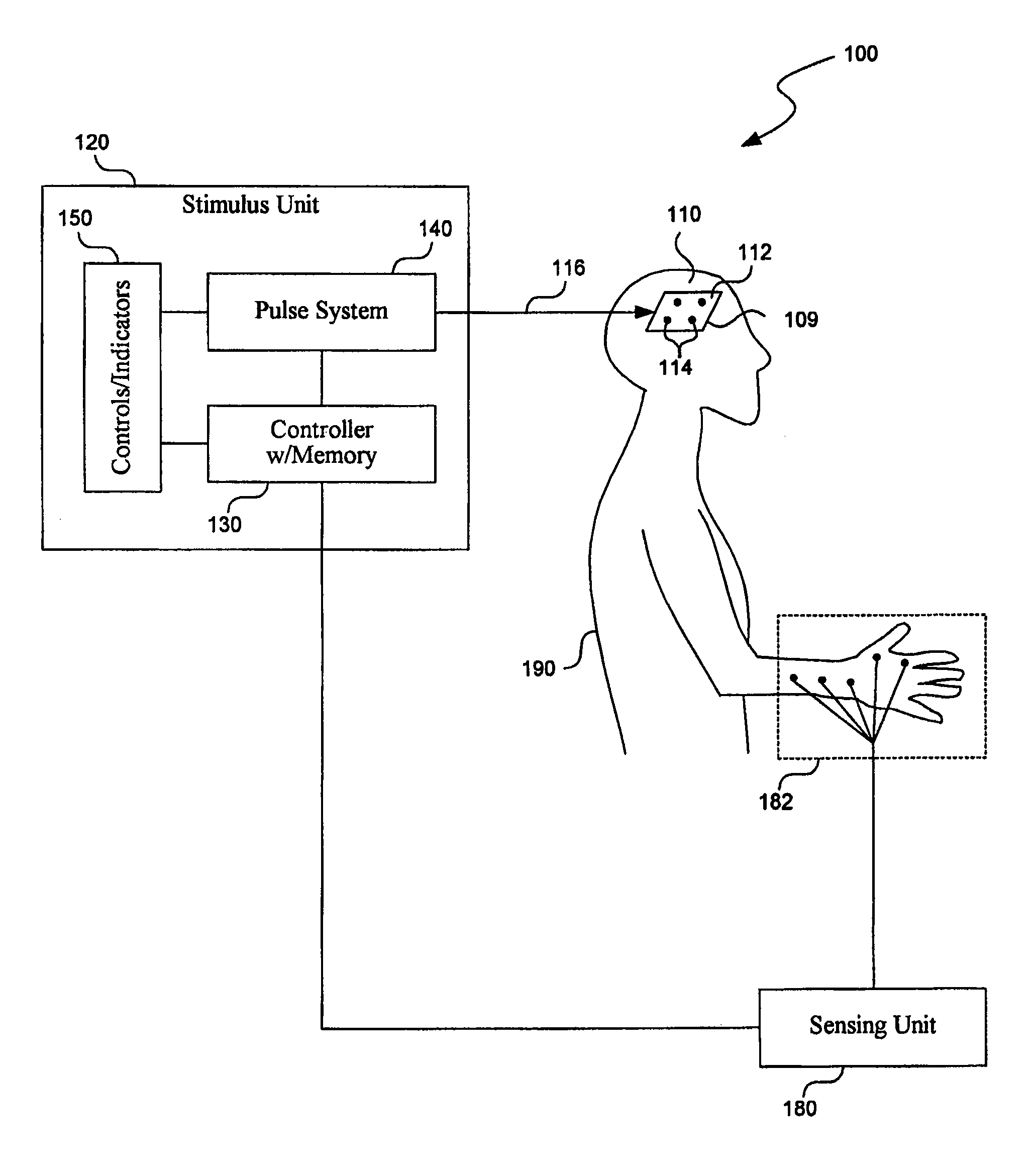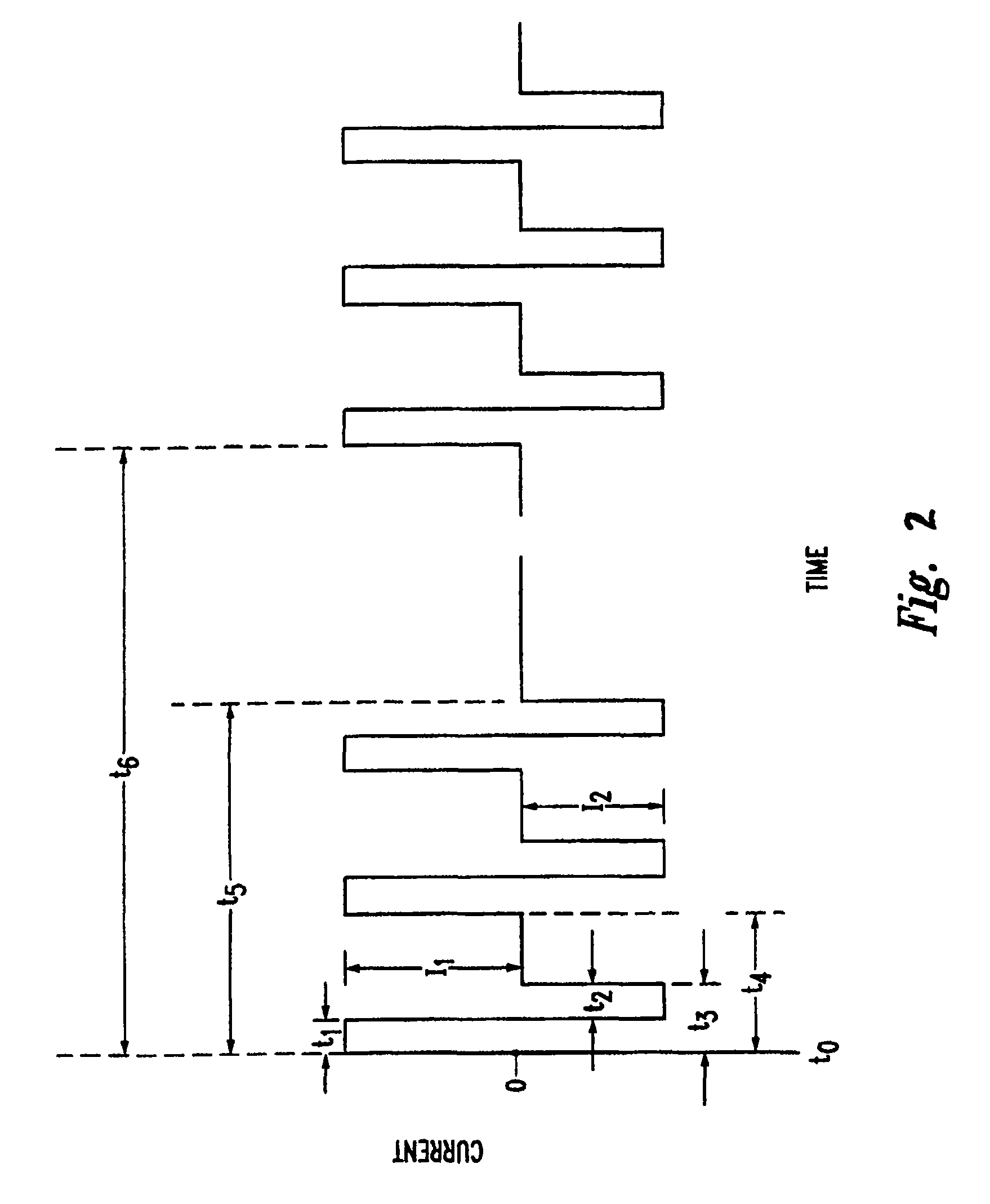Systems and methods for reducing the likelihood of inducing collateral neural activity during neural stimulation threshold test procedures
a neural stimulation and threshold test technology, applied in the field of systems and methods for reducing the likelihood of collateral neural activity during neural stimulation threshold test procedures, can solve the problems of many problems or abnormalities in body functions, difficult to effectively treat such abnormalities, and minimal treatment
- Summary
- Abstract
- Description
- Claims
- Application Information
AI Technical Summary
Benefits of technology
Problems solved by technology
Method used
Image
Examples
Embodiment Construction
[0019]The following disclosure describes systems and methods for reducing the likelihood of inducing collateral neural activity during the application of test stimulation signals to a patient for the purpose of determining a threshold stimulation level that induces or evokes a particular type of patient response, behavior, activity, sensation, perception, and / or reaction. In the context of the present invention, collateral neural activity may comprise seizure activity and / or essentially any other type of neural activity that may be undesirable, unwanted, unintended, and / or counterproductive relative to an intended or desired neural activity associated with neural stimulation threshold testing.
[0020]Various methods in accordance with the present invention are directed toward neural stimulation threshold test procedures that temporally manage the application of test stimulation signals to a patient. Neural stimulation lasting beyond several seconds (e.g., approximately 5 seconds) can ...
PUM
 Login to View More
Login to View More Abstract
Description
Claims
Application Information
 Login to View More
Login to View More - R&D
- Intellectual Property
- Life Sciences
- Materials
- Tech Scout
- Unparalleled Data Quality
- Higher Quality Content
- 60% Fewer Hallucinations
Browse by: Latest US Patents, China's latest patents, Technical Efficacy Thesaurus, Application Domain, Technology Topic, Popular Technical Reports.
© 2025 PatSnap. All rights reserved.Legal|Privacy policy|Modern Slavery Act Transparency Statement|Sitemap|About US| Contact US: help@patsnap.com



